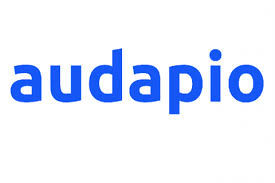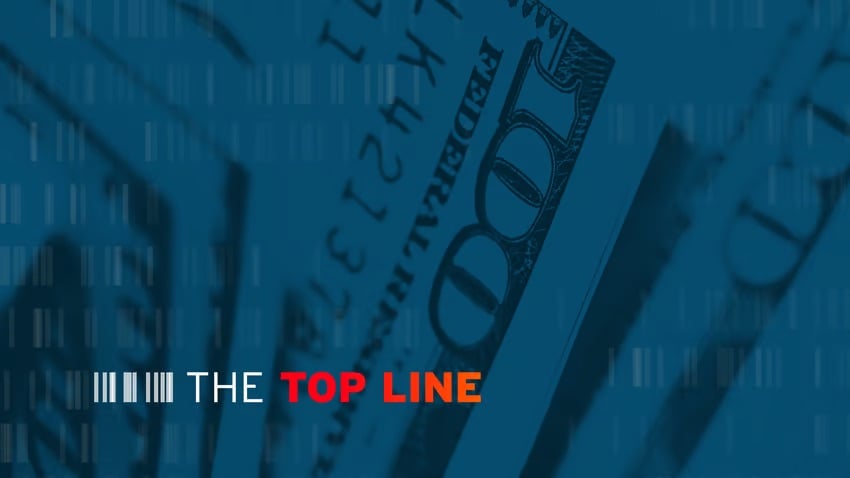预约演示
更新于:2025-05-07

KPMG Holdings Ltd.
更新于:2025-05-07
概览
关联
100 项与 KPMG Holdings Ltd. 相关的临床结果
登录后查看更多信息
0 项与 KPMG Holdings Ltd. 相关的专利(医药)
登录后查看更多信息
1,003
项与 KPMG Holdings Ltd. 相关的文献(医药)2024-03-01·Behavioral Research in Accounting
The Effect of Group Dynamics on Individual Ethical Decision Making
作者: Persellin, Julie ; Daniel, Rachel ; Kluetz, Abagail ; Douglass, Ashley
2022-06-30·Cases on Circular Economy in Practice
Sustainable Fast Fashion
作者: Pastore, Giammarco ; Frangiosa, Alessandro ; Di Mezza, Paolo Bernardo ; Loria, Vincenzo ; Falcone, Maria Francesca ; Romeo, Maria ; De Cazotte, Lucie Marie ; Bellomo, Matteo
2022-06-30·Cases on Circular Economy in Practice
The Relevance of CIER in the Italian Circular Plastics District
作者: Cuonzo, Francesco ; Spinosa, Mariavittoria ; Magnini, Giulio ; Carrassi, Paolo ; Casillo, Vincenzo ; Madonna, Marco ; Cocomero, Melania ; Grassi, Giorgia
192
项与 KPMG Holdings Ltd. 相关的新闻(医药)2025-04-23
SAN DIEGO and TORONTO, April 23, 2025 (GLOBE NEWSWIRE) -- Aptose Biosciences Inc. (“Aptose” or the “Company”) (TSX:APS), a clinical-stage precision oncology company developing a tuspetinib (TUS) based triple drug frontline therapy to treat patients with newly diagnosed acute myeloid leukemia (AML), announces that effective on April 15, 2025, KPMG LLP, the current independent registered public accounting firm of the Company (the “KPMG”), informed the Company that it will not stand for re-appointment for the Company’s 2025 annual audit. The Company anticipates that KPMG will continue to review its quarterly interim financial results through the first two fiscal quarters of 2025. The Company has initiated a process to appoint a new independent registered public accounting firm.
KPMG did not seek the Company’s consent to its decision to not stand for re-appointment as the Company’s independent registered public accounting firm. As a result, neither the Company’s Board of Directors nor the Audit Committee of the Company’s Board of Directors participated in KPMG’s decision.
KPMG issued unqualified reports on the Company’s consolidated financial statements for the fiscal years ended December 31, 2024 and 2023. The Company is a “smaller reporting company”, so KPMG was not required to prepare reports on the effectiveness of the Company’s internal control over financial reporting for the years ended December 31, 2024 and 2023.
During the Company’s fiscal years ended December 31, 2024 and 2023, and the subsequent interim period through April 15, 2025, there were no: (1) “disagreements” between the Company and KPMG within the meaning of Item 304(a)(1)(iv) of Regulation S-K on any matter of accounting principles or practices, financial statement disclosure, or auditing scope or procedures, which disagreements if not resolved to their satisfaction would have caused them to make reference in connection with their opinion to the subject matter of the disagreement, or (2) “reportable events” within the meaning of Item 304(a)(1)(v) of Regulation S-K, except that KPMG communicated to the Company its views regarding the material weakness in its internal control over financial reporting as disclosed in Part II, Item 9A of the Company’s Form 10-K for the fiscal year ended December 31, 2024 pertaining to its accounting for complex financial instruments, specifically with regards to warrants. The Company has authorized KPMG to respond fully to the inquiries of the successor independent registered public accounting firm, once one is engaged.
The filings required pursuant to Canadian and United States securities laws are publicly available at www.sedarplus.com and www.sec.gov.
About Aptose
Aptose Biosciences is a clinical-stage biotechnology company committed to developing precision medicines addressing unmet medical needs in oncology, with an initial focus on hematology. The Company's small molecule cancer therapeutics pipeline includes products designed to provide single agent efficacy and to enhance the efficacy of other anti-cancer therapies and regimens without overlapping toxicities. The Company’s lead clinical-stage compound tuspetinib (TUS), is an oral kinase inhibitor that has demonstrated activity as a monotherapy and in combination therapy in patients with relapsed or refractory acute myeloid leukemia (AML) and is being developed as a frontline triplet therapy in newly diagnosed AML. For more information, please visit www.aptose.com.
Forward Looking Statements
This press release contains forward-looking statements within the meaning of Canadian and U.S. securities laws, including, but not limited to, statements regarding the Company’s intentions to retain a new auditor and make the necessary filings and statements relating to the Company’s plans, objectives, expectations and intentions and other statements including words such as “continue”, “expect”, “intend”, “will”, “hope” “should”, “would”, “may”, “potential” and other similar expressions. Such statements reflect our current views with respect to future events and are subject to risks and uncertainties and are necessarily based upon a number of estimates and assumptions that, while considered reasonable by us, are inherently subject to significant business, economic, competitive, political and social uncertainties and contingencies. Many factors could cause our actual results, performance or achievements to be materially different from any future results, performance or achievements described in this press release. Such factors could include risks detailed from time-to-time in our ongoing current reports, quarterly filings, annual information forms, annual reports and annual filings with Canadian securities regulators and the United States Securities and Exchange Commission.
Should one or more of these risks or uncertainties materialize, or should the assumptions set out in the section entitled "Risk Factors" in our filings with Canadian securities regulators and the United States Securities and Exchange Commission underlying those forward-looking statements prove incorrect, actual results may vary materially from those described herein. These forward-looking statements are made as of the date of this press release and we do not intend, and do not assume any obligation, to update these forward-looking statements, except as required by law. We cannot assure you that such statements will prove to be accurate as actual results and future events could differ materially from those anticipated in such statements. Investors are cautioned that forward-looking statements are not guarantees of future performance and accordingly investors are cautioned not to put undue reliance on forward-looking statements due to the inherent uncertainty therein.
For further information, please contact: Aptose Biosciences Inc. Susan Pietropaolo Corporate Communications & Investor Relations 201-923-2049 spietropaolo@aptose.com
Released April 23, 2025
高管变更
2025-04-21
Burgdorf – Ypsomed (SIX:YPSN) and TecMed AG (TecMed) have entered into an agreement for the sale of Ypsomed diabetes care business for up to CHF 420 million, including earn-out. TecMed is a company based in Burgdorf, controlled by Willy Michel. Ypsomed is focusing on strengthening its leading position in the market for subcutaneous self-injection solutions for pharmaceutical and biotech companies.
Ypsomed is selling Ypsomed Diabetes Care AG, including the relevant subsidiaries, the patch pump development activities and related rights to TecMed. The transaction is expected to close in the second half of 2025, subject to regulatory approvals of the ongoing carve-out. The sale proceeds will finance the expansion of the injection system business.
Ypsomed is convinced that two specialised companies will be more focused, more agile and therefore, more successful in the long term.
On 13 November 2024, the company announced the start of the sales process of its diabetes care business. Following a comprehensive marketing phase that involved both potential strategic and financial buyers, in a structured auction process, TecMed emerged as the ideal partner to take over Ypsomed diabetes care business.
TecMed’s clear vision in diabetes care will reinforce stability for all stakeholders, especially our patients, healthcare professionals and employees. TecMed will combine Ypsomed tube pump system mylife Loop, including the mylife YpsoPump and the leading AID solution mylife CamAPS FX, with TecMed’s patch pump program to create a global diabetes care leader fully dedicated on innovative insulin infusion systems.
The combined company will have its new headquarters in Burgdorf with working space for around 300 employees. This reinforces the company’s regional ties. Approximately 200 employees currently working in Solothurn will move to Burgdorf later this year. This will free up space for further growth in Ypsomed’s core business.
We are focusing on capturing substantial opportunities in the subcutaneous self-injection market and expanding our global production capacities. Our fundamental growth drivers – the increasing popularity of selfcare, as well as the rise of biologics and biosimilars – continue to offer enormous potential. Thanks to our automated and scalable processes, we are well positioned to significantly participate in this growth, comments Simon Michel, CEO of Ypsomed on the decision to sell the diabetes care business.
Our vision is clear: to empower persons with diabetes through choice and innovation in their therapy options. The experience of Ypsomed Diabetes Care as a pioneer in insulin pump therapy will be the ideal set-up for the future launch of our patch-pump, says Patrick Schär current CEO and designated Chief Corporate Services Officer of TecMed AG.
By combining our existing mylife Loop solution, our strong commercial presence, and a patch pump currently under development, we are perfectly positioned to capture the momentum in the growing insulin pump market, says Sébastien Delarive, current Chief Business Officer Diabetes Care at Ypsomed and designated CEO of TecMed AG.
Ypsomed is investing in two new production halls, a new tool shop, and a conference centre at the Solothurn site, which will also be accessible to the public. By selling the pen needle manufacturing to the Italian company MTD and ending contract manufacturing for Sanofi, additional production capacities for the rapidly growing autoinjector business will be added at the Solothurn site.
Rothschild & Co advised Ypsomed as financial advisor and Walder Wyss as legal advisor. Furthermore, the Board of Directors mandated IFBC as an independent expert to provide a fairness opinion on the financial terms of the transaction.
TecMed AG was advised by Kellerhals Carrard acting as legal advisor and KPMG as M&A and tax advisor.
Ypsomed will share further information today at 14:00 CET during a video conference. Simon Michel, CEO, and Samuel Künzli, CFO, will present. The conference will be held in English.
2025-04-18
None
After a batch of much-anticipated reciprocal tariffs spared pharmaceuticals in early April, drugmakers, medtech companies, manufacturers and other outfits across the life sciences spectrum are still scrambling to respond to mounting trade pressures. While many unknowns remain, biopharma companies should waste no time in starting to evaluate their options. In this week’s episode of “The Top Line,” we dig into the latest round of tariffs unveiled by the Trump administration and how they could impact multiple areas of the life sciences industry. Fierce Pharma’s Fraiser Kansteiner sits down with KPMG’s life sciences sector leader Kristin Pothier, who discusses how the current tariffs could pose challenges, how drugmakers and other life sciences companies should respond and whether additional sector-specific duties are on the horizon. To learn more about the topics in this episode: As Trump's 'Liberation Day' tariffs seem to spare pharmaceuticals, threat of industry-specific duties and loopholes persistsDrugmakers fear Trump tariffs will drive up manufacturing costs, hurt medicine access: BIO surveyEli Lilly CEO on Trump's tariffs: 'It'll be hard to come back from here'Trump again threatens tariffs on pharmaceuticals in 'not too distant' future

100 项与 KPMG Holdings Ltd. 相关的药物交易
登录后查看更多信息
100 项与 KPMG Holdings Ltd. 相关的转化医学
登录后查看更多信息
组织架构
使用我们的机构树数据加速您的研究。
登录
或

管线布局
2025年12月22日管线快照
无数据报导
登录后保持更新
药物交易
使用我们的药物交易数据加速您的研究。
登录
或

转化医学
使用我们的转化医学数据加速您的研究。
登录
或

营收
使用 Synapse 探索超过 36 万个组织的财务状况。
登录
或

科研基金(NIH)
访问超过 200 万项资助和基金信息,以提升您的研究之旅。
登录
或

投资
深入了解从初创企业到成熟企业的最新公司投资动态。
登录
或

融资
发掘融资趋势以验证和推进您的投资机会。
登录
或

生物医药百科问答
全新生物医药AI Agent 覆盖科研全链路,让突破性发现快人一步
立即开始免费试用!
智慧芽新药情报库是智慧芽专为生命科学人士构建的基于AI的创新药情报平台,助您全方位提升您的研发与决策效率。
立即开始数据试用!
智慧芽新药库数据也通过智慧芽数据服务平台,以API或者数据包形式对外开放,助您更加充分利用智慧芽新药情报信息。
生物序列数据库
生物药研发创新
免费使用
化学结构数据库
小分子化药研发创新
免费使用